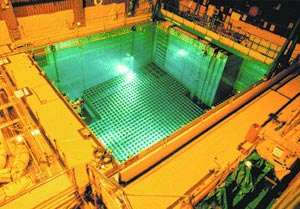Ten bogus frights of the past that shocked the world
Fear gripped planet Earth on the eve of 2000 when the world was expecting the impact of Y2K
Bird flu has overshadowed the year 2005. The abominable virus claimed many bird lives in South East Asia before heading across Europe to Russia and Ukraine. However, the more scientists and officials talk about the deadly threat, the less credible it looks to people. Some people believe there is no such thing as bird flu. They think the whole story stemmed from the fights over the world market between the poultry producers. Others blame the pharmaceutical companies that are keen to spread panic and therefore make us buy more medicines. Which story should we believe in? Does the bird flu really exist? Does it pose a threat to humans? Did other threats of the worldwide proportions materialize?
Millennium Bug
 have killed thousands of people all over the world.
have killed thousands of people all over the world.
It did not take long to tackle the problem; doctors found a pathogen and a vector – coronovirus and a palm cat, a viverrine animal normally used for food in China. However, the urgent measures could not stop another myth from spreading far and wide. The myth said that the SARS problem was made up to lower China's economic growth and disrupt the exceedingly profitable tourist industry in South East Asia.
Academician of the Russian Academy of Sciences Lev Sandakhchiyev:
“Discovering a new more dangerous type of previously unknown coronavirus in the patients was direct evidence of a real threat. The 'spinning' of that epidemic stressed the importance of international cooperation. Many people did realize that humankind was destined to face new or recurrent infectious diseases. Therefore, a system of global and domestic monitoring is highly required.”
Spent nuclear fuel
Following a heated debate in 2001, the Russian president signed into law the bill on storage and reutilization of spent nuclear fuel from foreign nuclear power  plants. Specialists were unanimous while explaining to their opponents that spent nuclear fuel was not just the waste material from the nuclear industry. According to them, it is a high-tech product that can be used for extracting raw materials and energy. Despite potentially huge profits Russia could make (one ton of spent nuclear fuel costs $1 million; total estimated amount of spent nuclear fuel is 200 thousand tons), environmentalists have been relentless in their opposition to the new law.
plants. Specialists were unanimous while explaining to their opponents that spent nuclear fuel was not just the waste material from the nuclear industry. According to them, it is a high-tech product that can be used for extracting raw materials and energy. Despite potentially huge profits Russia could make (one ton of spent nuclear fuel costs $1 million; total estimated amount of spent nuclear fuel is 200 thousand tons), environmentalists have been relentless in their opposition to the new law.
Nikolai Shingarev, Director of the Information Center of the Federal Agency on Nuclear Energy:
“No spent nuclear fuel is being brought into Russia despite the law. We will probably sign the first contract under the new legislation for a small consignment of spent nuclear fuel from a research reactor in Uzbekistan. Today Russia is receiving nuclear waste from the nuclear plants built in the Soviet era in Ukraine ($370 thousand per1 ton)and Bulgaria($600 thousand per one ton). Reutilization waste materials will be stored in Russia only if the governments OKs the storage and only if fuel had been originally produced in Russia. 75% of revenues will be allocated for environmental programs and the remaining 25% will make part of local budgets.”
10 myths of the past, which never materialized
Steam-driven locomotive: serious scientists were asserting that cows would stop bearing offspring and produce milk at the sight of a locomotive. They also clamed that air would be squeezed out of train carriages at 20 km per hour and passengers will suffocate as a result.
Robot: intelligent machines will shake off dependence and take command of the world; humans would submit to the power of the machines.
Spacecraft: spacecraft were making holes in the atmosphere during the takeoff; the earth's protective anti-radiation layer of the atmosphere will be eventually destroyed and thus the earth will be exposed to dangerous space particles.
Microwave oven: fried sausages can irradiate in the dark; radiation from food cooked in the oven will pile up in the human body and cause cancer.
Cell phone: radiation emitted by a cell phone receiver can affect the brain by liquefying it. Paradoxically, a cell phone phobia could not stop the massive spread of cellular communications all over the world.
Vaccination: the danger of vaccination is one of the longstanding fears in the world; the first objectors appeared shortly after the first vaccination campaign launched by Dr. Edward Jenner in 1796; many objected to vaccination in Russia at the end of the 1990s.
Environmental pollution: some people feared that the civilization would come to end by 2020 due to sky-high levels of industrial and communal pollution which should result in a lack of oxygen and poisonous evaporation.
Asbestos: Micro particles of asbestos cause lung cancer. Asbestos was produced in Canada and the USSR. Canadian asbestos companies went bankrupt following an anti-asbestos propaganda campaign instigated by the competitors. Russia's asbestos makers have survived the bad times. The incidence rate of cancer in the town of Asbest does not exceed an average national incidence rate of cancer.
Global warming: industrial emissions of carbon dioxide cause the greenhouse effect that leads to overheating of the earth's surface. Consequently, polar ice will melt away causing the global ocean level rise by one meter.
Ozone holes: Freon used in refrigerators and deodorants will destroy the ozone layer of the atmosphere, which protects Earth against the harmful effects of ultraviolet radiation. As a result, the number of cancer and other deadly diseases will grow.
Discuss this article on Pravda.Ru English Forum
Subscribe to Pravda.Ru Telegram channel, Facebook, RSS!




